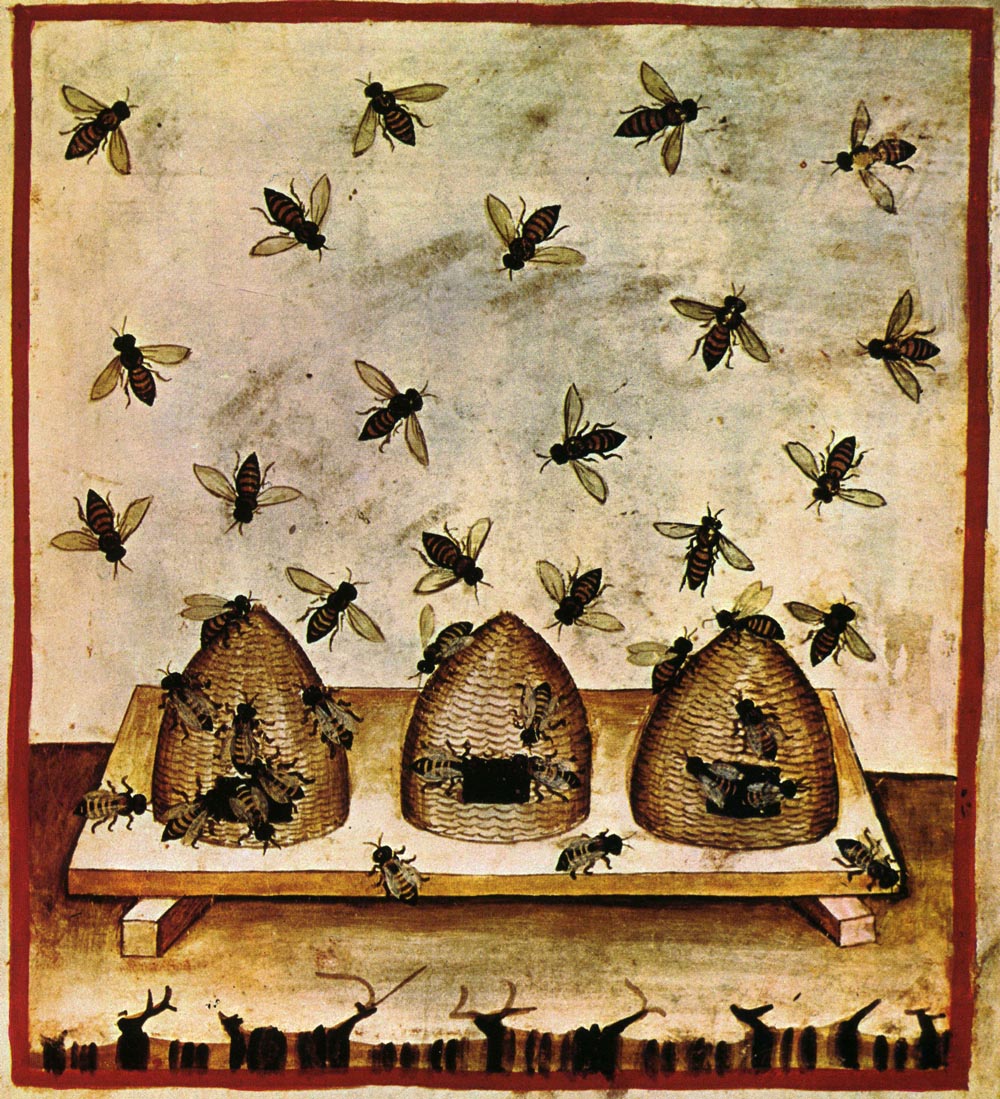|
Abadía De Cristo Rey
Abadía de Cristo Rey, El Siambón, Tucumán, Argentina, is a Benedictine monastery of the Cono-Sur Congregation. Founded by the monks of Abadía del Niño Dios in 1956, the monastery went on to become an abbey. As of 2000, the monastery was home to twelve monks, under the leadership of Prior Administrator Juan Carlos Romano. History In 1899, Abadía del Niño Dios was founded by the Abbey of Belloc, France, a member of the Subiaco Congregation. By 1929, Niño Dios had become an independent abbey, the first in Spanish America. In 1956, twelve monks from Abadía del Niño Dios, five priests, six clerics, and on brother, established a monastic foundation at El Siambón, a mountain-ringed valley 60 km from the provincial capital, San Miguel de Tucumán. Despite the fact that the monastery itself took some years to construct, the nascent community immediately began to live the Benedictine life. At the same time, they started ministering to the spiritual needs of the resi ... [...More Info...] [...Related Items...] OR: [Wikipedia] [Google] [Baidu] |
Cono-Sur Congregation
The Cono-Sur Congregation (''Congregatio Cono-Sur'') is a congregation of monasteries within the Benedictine Confederation. Founded in 1976, the Congregation now includes ten male monasteries spread throughout four of the countries of South America's Southern Cone region. Additionally, eight female monasteries are members of the Congregation. The current Abbot President of the Congregation resides at Monasterio Benedictino Santa María in Los Toldos, Argentina. List of member houses and ''dependencies'' Male *Argentina ** Abadía del Niño Dios (1899), Entre Ríos ***''Monasterio de la Pascua'', Canelones, Uruguay ***''Monasterio San Benito de Llíu Llíu'', Limache, Chile **Abadía de Cristo Rey, El Siambón, Tucumán ** Abadía Santa María de Los Toldos, Los Toldos ***''Monasterio Benedictino'', Tupäsy María, Santiago, Paraguay **Abadía de San Benito, Luján ***''Padres Benedictinos'', Buenos Aires **Monasterio de Ntra. Sra. de la Paz, San Agustín, Córdoba *Chile ... [...More Info...] [...Related Items...] OR: [Wikipedia] [Google] [Baidu] |
San Miguel De Tucumán
San Miguel de Tucumán (; usually called simply Tucumán) is the capital and largest city of Tucumán Province, located in northern Argentina from Buenos Aires. It is the fifth-largest city of Argentina after Buenos Aires, Córdoba, Rosario and Mendoza and the most important of the northern region. The Spanish conquistador founded the city in 1565 in the course of an expedition from present-day Peru. Tucumán moved to its present site in 1685. Overview The city is bordered on the north by Las Talitas ( Tafí Viejo), on the east by Banda del Río Salí and Alderetes (Cruz Alta), on the west by the city of Yerba Buena, and on the south by Lules. The city is located on the slopes of the Aconquija mountains, the easternmost mountain range before the large Chaco- Pampean flats. It is the commercial center of an irrigated area that produces large quantities of sugarcane, rice, tobacco, and fruit, giving the province its nickname, the Garden of the Republic. The National Univer ... [...More Info...] [...Related Items...] OR: [Wikipedia] [Google] [Baidu] |
Christian Organizations Established In 1956
Christians () are people who follow or adhere to Christianity, a monotheistic Abrahamic religion based on the life and teachings of Jesus Christ. The words ''Christ'' and ''Christian'' derive from the Koine Greek title ''Christós'' (Χριστός), a translation of the Biblical Hebrew term '' mashiach'' (מָשִׁיחַ) (usually rendered as ''messiah'' in English). While there are diverse interpretations of Christianity which sometimes conflict, they are united in believing that Jesus has a unique significance. The term ''Christian'' used as an adjective is descriptive of anything associated with Christianity or Christian churches, or in a proverbial sense "all that is noble, and good, and Christ-like." It does not have a meaning of 'of Christ' or 'related or pertaining to Christ'. According to a 2011 Pew Research Center survey, there were 2.2 billion Christians around the world in 2010, up from about 600 million in 1910. Today, about 37% of all Christians live in the ... [...More Info...] [...Related Items...] OR: [Wikipedia] [Google] [Baidu] |
1956 Establishments In Argentina
Events January * January 1 – The Anglo-Egyptian Condominium ends in Sudan. * January 8 – Operation Auca: Five U.S. evangelical Christian missionaries, Nate Saint, Roger Youderian, Ed McCully, Jim Elliot and Pete Fleming, are killed for trespassing by the Huaorani people of Ecuador, shortly after making contact with them. * January 16 – Egyptian leader Gamal Abdel Nasser vows to reconquer Palestine. * January 25– 26 – Finnish troops reoccupy Porkkala, after Soviet troops vacate its military base. Civilians can return February 4. * January 26 – The 1956 Winter Olympics open in Cortina d'Ampezzo, Italy. February * February 11 – British spies Guy Burgess and Donald Maclean resurface in the Soviet Union, after being missing for 5 years. * February 14– 25 – The 20th Congress of the Communist Party of the Soviet Union is held in Moscow. * February 16 – The 1956 World Figure Skating Championships open in Garmisch, West Germany. * February ... [...More Info...] [...Related Items...] OR: [Wikipedia] [Google] [Baidu] |
Benedictine Monasteries In Latin America
, image = Medalla San Benito.PNG , caption = Design on the obverse side of the Saint Benedict Medal , abbreviation = OSB , formation = , motto = (English: 'Pray and Work') , founder = Benedict of Nursia , founding_location = Subiaco Abbey , type = Catholic religious order , headquarters = Sant'Anselmo all'Aventino , num_members = 6,802 (3,419 priests) as of 2020 , leader_title = Abbot Primate , leader_name = Gregory Polan, OSB , main_organ = Benedictine Confederation , parent_organization = Catholic Church , website = The Benedictines, officially the Order of Saint Benedict ( la, Ordo Sancti Benedicti, abbreviated as OSB), are a monastic religious order of the Catholic Church following the Rule of Saint Benedict. They are also sometimes called the Black Monks, in reference to the colour of their religious habits. They ... [...More Info...] [...Related Items...] OR: [Wikipedia] [Google] [Baidu] |
Roman Catholicism In Argentina
, native_name_lang = pt , image = Facade_BA_Metropolitan_Church.jpg , imagewidth = 230px , alt = , caption = Buenos Aires Metropolitan Cathedral , abbreviation = , type = National polity , main_classification = Catholic , orientation = Christianity , scripture = Bible , theology = Catholic theology , polity = Episcopal , governance = CEA , structure = , leader_title = Pope , leader_name = Francis , leader_title1 = Primate , leader_name1 = Mario Aurelio Poli , fellowships_type1 = , fellowships1 = , division_type = , division = , division_type1 = , division1 = , division_type2 = , division2 = , division_type3 = , division3 = , associations = , area = Argentina , language = ... [...More Info...] [...Related Items...] OR: [Wikipedia] [Google] [Baidu] |
Priesthood (Catholic Church)
The priesthood is the office of the ministers of religion, who have been commissioned (" ordained") with the Holy orders of the Catholic Church. Technically, bishops are a priestly order as well; however, in layman's terms ''priest'' refers only to presbyters and pastors (parish priests). The church's doctrine also sometimes refers to all baptised ( lay) members as the "common priesthood", which can be confused with the ministerial priesthood of the consecrated clergy. The church has different rules for priests in the Latin Church–the largest Catholic particular church–and in the 23 Eastern Catholic Churches. Notably, priests in the Latin Church must take a vow of celibacy, whereas most Eastern Catholic Churches permit married men to be ordained. Deacons are male and usually belong to the diocesan clergy, but, unlike almost all Latin Church (Western Catholic) priests and all bishops from Eastern or Western Catholicism, they may marry as laymen before their ordination ... [...More Info...] [...Related Items...] OR: [Wikipedia] [Google] [Baidu] |
Marmalade
Marmalade is a fruit preserve made from the juice and peel of citrus fruits boiled with sugar and water. The well-known version is made from bitter orange. It is also made from lemons, limes, grapefruits, mandarins, sweet oranges, bergamots, and other citrus fruits, or a combination. Citrus is the most typical choice of fruit for marmalade, though historically the term has often been used for non-citrus preserves.Maguelonne-Samat, (Anthea Bell, tr.) ''A History of Food'' 2nd ed. 2009, p. 507 The preferred citrus fruit for marmalade production is the Spanish Seville or bitter orange, ''Citrus aurantium'' var. ''aurantium'', prized for its high pectin content, which sets readily to the thick consistency expected of marmalade. The peel imparts a bitter taste. The word "marmalade" is borrowed from the Portuguese , from 'quince'. Unlike jam, a large quantity of water is added to the fruit in a marmalade, the extra liquid being set by the high pectin content of the fruit. ... [...More Info...] [...Related Items...] OR: [Wikipedia] [Google] [Baidu] |
Compote
Compote or compôte (French for ''mixture'') is a dessert originating from medieval Europe, made of whole or pieces of fruit in sugar syrup. Whole fruits are cooked in water with sugar and spices. The syrup may be seasoned with vanilla, lemon or orange peel, cinnamon sticks or powder, cloves, other spices, ground almonds, grated coconut, candied fruit or raisins. The compote is served either warm or cold. History Compote conformed to the medieval belief that fruit cooked in sugar syrup balanced the effects of humidity on the body. The name is derived from the Latin word ''compositus'', meaning mixture. In late medieval England it was served at the beginning of the last course of a feast (or sometimes the second out of three courses), often accompanied by a creamy potage.Thomas Austin, ed. ''Two Fifteenth-Century Cookery-Books''. The Early English Text Society, New York, 1888 (reprinted 1964). During the Renaissance, it was served chilled at the end of dinner. Because it ... [...More Info...] [...Related Items...] OR: [Wikipedia] [Google] [Baidu] |
Beekeeping
Beekeeping (or apiculture) is the maintenance of bee colonies, commonly in man-made beehives. Honey bees in the genus ''Apis'' are the most-commonly-kept species but other honey-producing bees such as '' Melipona'' stingless bees are also kept. Beekeepers (or apiarists) keep bees to collect honey and other products of the hive: beeswax, propolis, bee pollen, and royal jelly. Pollination of crops, raising queens, and production of package bees for sale are other sources of beekeeping income. Bee hives are kept in an apiary or "bee yard". The keeping of bees by humans, primarily for honey production, began around 10,000 years ago. Georgia is known as the "cradle of beekeeping" and the oldest honey ever found comes from that country. The 5,500-year-old honey was unearthed from the grave of a noblewoman during archaeological excavations in 2003 near the town Borjomi. Ceramic jars found in the grave contained several types of honey, including linden and flower honey. Domes ... [...More Info...] [...Related Items...] OR: [Wikipedia] [Google] [Baidu] |
Forestry
Forestry is the science and craft of creating, managing, planting, using, conserving and repairing forests, woodlands, and associated resources for human and environmental benefits. Forestry is practiced in plantations and natural stands. The science of forestry has elements that belong to the biological, physical, social, political and managerial sciences. Forest management play essential role of creation and modification of habitats and affect ecosystem services provisioning. Modern forestry generally embraces a broad range of concerns, in what is known as multiple-use management, including: the provision of timber, fuel wood, wildlife habitat, natural water quality management, recreation, landscape and community protection, employment, aesthetically appealing landscapes, biodiversity management, watershed management, erosion control, and preserving forests as "sinks" for atmospheric carbon dioxide. Forest ecosystems have come to be seen as the most important comp ... [...More Info...] [...Related Items...] OR: [Wikipedia] [Google] [Baidu] |
Good Shepherd Sisters
The Congregation of Our Lady of Charity of the Good Shepherd, also known as the Sisters of the Good Shepherd, is a Catholic religious order that was founded in 1835 by Mary Euphrasia Pelletier in Angers, France. The religious sisters belong to a Catholic international congregation of religious women dedicated to promoting the welfare of women and girls. The Congregation has a representative at the United Nations, and has spoken out against human trafficking. In some countries' laundries and other institutions that were run by the Sisters, it was found that historically they incarcerated young girls, forcing them to do industrial work, with no pay and much mistreatment. History The Congregation of the Sisters of the Good Shepherd began as a branch of the Order of Our Lady of Charity (''Ordo Dominae Nostrae de Caritate''), founded in 1641 by John Eudes, at Caen, France, and dedicated to the care, rehabilitation, and education of girls and young women in difficulty. Some of the g ... [...More Info...] [...Related Items...] OR: [Wikipedia] [Google] [Baidu] |







